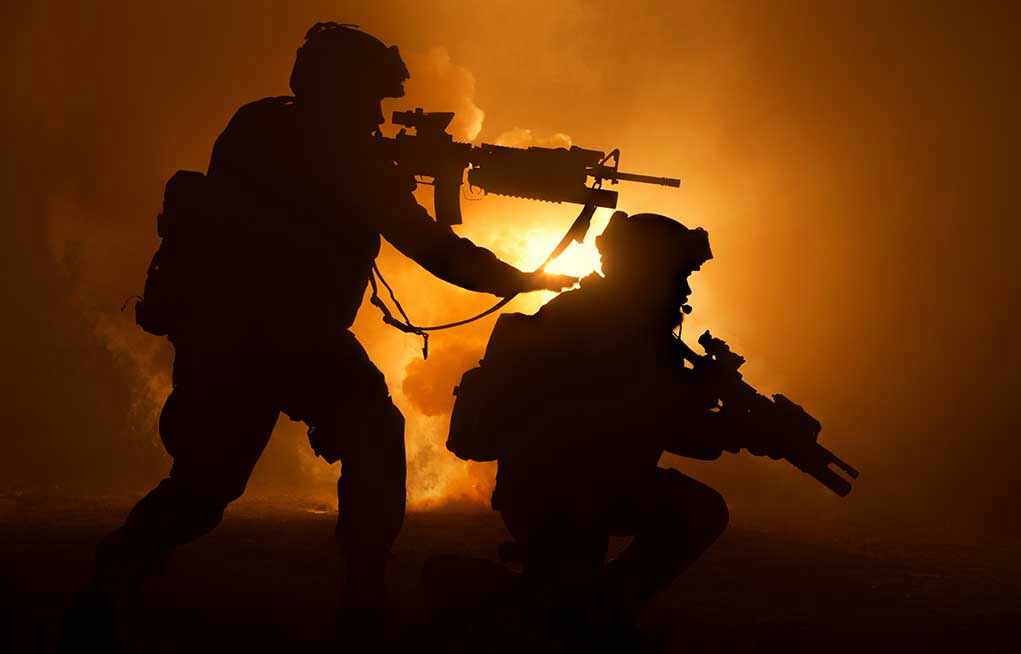
If you thought the future of warfare was all about big tanks and fighter jets, think again—it’s algorithms, drones, and biotech that are shaping the next battlefield.
At a Glance
- AI and autonomous systems are transforming warfare, leading to faster decision-making.
- The U.S., China, and Russia are in a technological arms race for AI and autonomous warfare supremacy.
- AI-driven command systems and drone swarms are becoming the new military norm.
- Ethical and legal challenges arise from AI’s role in lethal decision-making.
The Rise of Algorithmic Warfare
The concept of algorithmic warfare isn’t just a sci-fi dream; it’s already in motion. The integration of automation in military strategy began as early as WWII with codebreaking and has evolved into something much more complex. Today, nations are investing heavily in AI, robotics, and biotechnology to gain a strategic edge. This isn’t about having the biggest guns; it’s about having the smartest ones.
Project Maven, launched by the U.S. Department of Defense in 2017, highlighted the potential of AI in military operations by using it for drone video analysis and target identification. Meanwhile, drone swarms have been put to the test in conflicts like Nagorno-Karabakh and Ukraine, proving their operational impact. These developments underscore a shift towards data-centric warfare where AI-driven decision-making dominates.
Key Players in the AI Arms Race
Leading the charge are the U.S. Department of Defense, China’s People’s Liberation Army, and Russia’s Ministry of Defense, each vying for AI superiority. On the industry front, companies like Anduril and Palantir are at the forefront, developing cutting-edge technologies in collaboration with military institutions. These partnerships highlight the growing reliance on private sector innovation in defense.
The U.S. Army has taken significant steps, awarding a $100 million contract to Anduril to prototype and scale the Next Generation Command and Control (NGC2) system. This system aims to integrate AI into military operations, emphasizing decision dominance and multi-domain operations. Meanwhile, China is investing in “intelligentized warfare,” focusing on AI-driven command systems that integrate across land, air, sea, space, and cyber domains.
Challenges and Implications
While AI and autonomous systems promise faster and more efficient military operations, they also bring challenges. Ethical and legal questions arise as algorithms gain more control over lethal decision-making processes. The strategic balance could shift as nations with advanced AI capabilities gain an upper hand, potentially destabilizing existing power structures.
Military personnel are also affected, with roles shifting towards human-machine teaming. There’s an urgent need for new training and doctrine adaptations to leverage these technologies effectively while managing associated risks. The tech industry is booming with defense contracts, yet this comes with ethical dilemmas about the role of AI in warfare.
The Road Ahead
As the AI arms race intensifies, the future of warfare is bound to be fascinating and fraught with uncertainties. The U.S., China, and Russia are investing heavily in AI and autonomous systems, leading to rapid technological advances but also increased risks. The integration of AI into military operations requires careful consideration of ethical and legal frameworks to ensure responsible use.
Experts argue that AI integration in military systems should be evolutionary, requiring human oversight and explainable AI to maintain trust. The development of AI-driven wargaming and scenario modeling is crucial to prepare for the full implications of algorithmic warfare. As nations race for algorithmic dominance, the stakes have never been higher.












